The world’s oldest opera gains a space-age stage intervention
Kinetic sculpture 'Ego' – designed by Lonneke Gordijn of Studio Drift – moves with the performance in a minimal and modern manifestation of the world’s oldest-known opera, L’Orfeo
Watch Ego, by Lonneke Gordijn in action at L’Orfeo. Photography: Jefta Varwijk
‘My first encounter with artist collective Studio Drift was In 20 Steps (2016) in Eindhoven, a work that to me, addresses life, death and nature,’ recalls opera stage director Monique Wagemakers. ‘I think that more than a set designer, an artist can give clearer pictures alongside the music so you can hear it through your eyes; you hear better, and in a different dimension.’ The idea of a Gesamtkunstwerk (an all-embracing form of art) emerged when she was commissioned to stage the opera, L’Orfeo, a year ago; this multidisciplinary performance is a collaborative creation with three fellow Dutch female creatives, choreographer Nanine Linning, costume designer Marlou Breuls and Lonneke Gordijn of Studio Drift.
L’Orfeo, the world’s oldest-known opera, composed by Italian Claudio Monteverdi in 1607, is the story of the mythological Orfeo (Orpheus in English) – son of the Greek god Apollo and the chief among poets and musicians – and what he learns about life from his failed quest to bring his dead bride Eurydice back from the underworld.
The performance is a minimal and modern manifestation on a digital-age stage, described by Gordijn as ‘where technology is used to create visual effects that are impossible in a “real” situation and to sculpt an experience where dance, music, voice, sculpture become one voice’. L’Orfeo debuted on 25 January in Enschede and will be performed at the iconic Carré theatre in Amsterdam on 9 and 11 February.
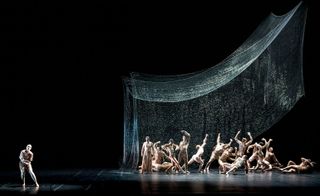
Inspiration for Ego
‘We didn't know what it would be in the beginning; we dived into the opera, listened to the music, read the lyrics, and then thought about what part of this opera we wanted to highlight in this production,’ Gordijn says. ‘Orfeo is unable to live in the moment. He is always longing for the past or the future, but not seeing what he has in the present. It is something that we could all relate to as humans. It was important for me to get the inner world of Orfeo visible; to be the space in which the opera takes place.’
Ego comes to life
Interpreting this space is Studio Drift’s Ego, which comprises a suspended 9 x 4.5 metre block that is hand-woven from 16 kilometres of reflective hair-thin Japanese fluorocarbon. Its eight corners are connected to motors that control it via uniquely developed algorithms and software to depict the sentiments of the ten dancers and ten opera singers on stage. ‘The form was pretty clear from the beginning because we very often work with the block shape (Drifter, 2017; Materialism, 2018), which for me represents the rigidness of our human systems and its nuances,’ says Gordijn.

Ego can become completely liquid, transparent or solid; the sculpture morphs into different shapes to express Orfeo’s changing emotions and also to mark the shifting of time and space. In the first sequences, for example, Orfeo and Eurydice are joyfully introduced by a chorus of nymphs and shepherds while all are encaved by Ego in its rigid form – symbolising the protagonist’s naivety and scant understanding of love and life.
The collapse of Ego
As Ego rises and the death of Eurydice is being announced, Orfeo’s world collapses and the block starts to deform. In the scene when he loses his bride again in the Underworld, Ego is stretched and ripped as if it is the cruel fate that has torn them apart. Ego falls and traps Orfeo inside it when he notices that his faith in love is forever gone with Eurydice. ‘In reality our perspectives give us direction and clarity, but at a certain point, they become our limitation,’ says Gordijn.
‘It was important for me to get the inner world of Orfeo visible; to be the space in which the opera takes place’
Pushing Ego's boundaries
‘The biggest challenge was to create swift and sharp movements and we developed a tensioner on the pulley system to achieve that and to ensure that the strings never get entangled on the stage even when fully extended,’ Gordijn explains. During the performance, an operator directs the block to align with the performers. The super-thin wires that are used have a resistance in the air so that when the block drops, it doesn't fall but floats down; and that is the same kind of movement which was in Shylight (2015): sensitive, emotional and very human.
To demonstrate its full capacity, Ego will go solo at Pace Gallery’s New York space during the Armory Show in early March. A new performance is in development and the studio is seeking the most unexpected musician to pair it with. The gallery version, tailored to the space, will be in black nylon and smaller in scale. The new challenge is that the nylon threads are so thin that the sculpture is almost invisible. Gordijn explains: ‘when it shifts, falls or contracts, the threads layer up, and you will see black starting to emerge in the middle of the space.’
Wallpaper* Newsletter
Receive our daily digest of inspiration, escapism and design stories from around the world direct to your inbox.
INFORMATION
L’Orfeo will be on show at Carré Theatre 9 and 11 February
Yoko Choy is the China editor at Wallpaper* magazine, where she has contributed for over a decade. Her work has also been featured in numerous Chinese and international publications. As a creative and communications consultant, Yoko has worked with renowned institutions such as Art Basel and Beijing Design Week, as well as brands such as Hermès and Assouline. With dual bases in Hong Kong and Amsterdam, Yoko is an active participant in design awards judging panels and conferences, where she shares her mission of promoting cross-cultural exchange and translating insights from both the Eastern and Western worlds into a common creative language. Yoko is currently working on several exciting projects, including a sustainable lifestyle concept and a book on Chinese contemporary design.
-
 ‘There are hidden things out there, we just need to look’: Studiomama's stone animals have quirky charm
‘There are hidden things out there, we just need to look’: Studiomama's stone animals have quirky charmStudiomama founder's Nina Tolstrup and Jack Mama sieve the sands of Kent hunting down playful animal shaped stones for their latest collection
By Ali Morris Published
-
 Tokyo firm Built By Legends gives fresh life to a performance icon, Nissan’s R34 GT-R
Tokyo firm Built By Legends gives fresh life to a performance icon, Nissan’s R34 GT-RThis Japanese restomod brings upgrades and enhancements to the Nissan R34 GT-R, ensuring the cult of the Skyline stays forever renewed
By Jonathan Bell Published
-
 Squire & Partners' radical restructure: 'There are a lot of different ways up the firm to partnership'
Squire & Partners' radical restructure: 'There are a lot of different ways up the firm to partnership'Squire & Partners announces a radical restructure; we talk to the late founder Michael Squire's son, senior partner Henry Squire, about the practice's new senior leadership group, its next steps and how architecture can move on from 'single leader culture'
By Ellie Stathaki Published
-
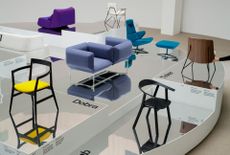 Prostoria celebrates its modernist roots and a decade of design
Prostoria celebrates its modernist roots and a decade of design‘Prostoria 10’ is a project marking the Croatian furniture brand’s ten years and its connection with Zagreb’s rich modernist architectural legacy
By Simon Mills Last updated
-
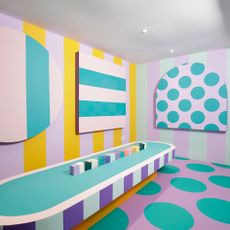 Lego enlists Camille Walala for interactive shipping container in London
Lego enlists Camille Walala for interactive shipping container in LondonIn celebration of Lego’s new 2D play concept, the Lego Dot, Camille Walala creates an interactive shipping-container installation in King’s Cross, using over two million lego bricks
By Katie Meston Published
-
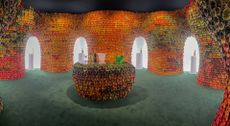 In Miami, Perrier-Jouët presents a cave of ceramics
In Miami, Perrier-Jouët presents a cave of ceramics11,000 ceramics in four different shades and 15 different hues make up Metamorphosis, an installation by Andrea Mancuso for Maison Perrier-Jouët at Design Miami
By Sujata Burman Last updated
-
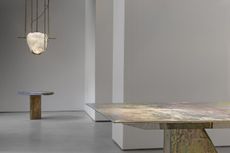 Sculpting iridescent forms with Vincenzo De Cotiis
Sculpting iridescent forms with Vincenzo De CotiisAt Carpenters Workshop Gallery in Paris, ‘Éternel’ showcases 18 new forms by Vincenzo De Cotiis
By Benoit Loiseau Last updated
-
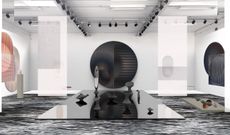 Dutch Design Week 2019 captures the zeitgeist
Dutch Design Week 2019 captures the zeitgeistWhat to expect from the 18th year of Dutch Design Week in Eindhoven, from social design to sustainable innovations
By Giovanna Dunmall Last updated
-
 Decoding the creative process at Mini’s A/D/O space in New York
Decoding the creative process at Mini’s A/D/O space in New YorkUniversal Design Studio realises an ever-evolving installation titled ‘On Loop’ inside the Brooklyn spot
By Pei-Ru Keh Last updated
-
 Dan Tobin Smith takes visitors on an immersive journey inside gemstones
Dan Tobin Smith takes visitors on an immersive journey inside gemstonesFor London Design Festival, the photographer, together with The Experience Machine and Gemfields, creates an animation of gemstone inclusions inside Collins Music Hall
By Tom Seymour Last updated
-
 Isamu Noguchi's unrealised playground design revealed in New York
Isamu Noguchi's unrealised playground design revealed in New YorkBy Pei-Ru Keh Last updated